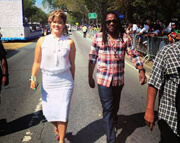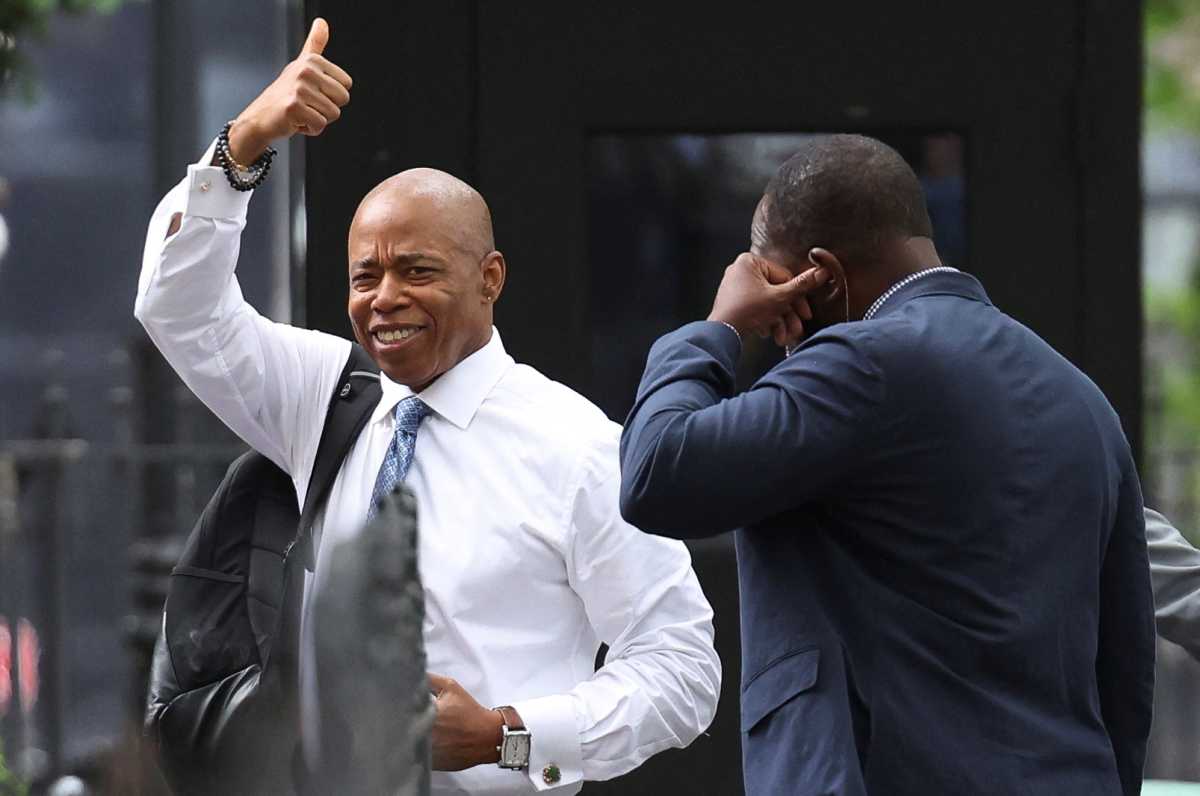Jamaicans joined legions from the English, Dutch, Spanish and French Caribbean who annually parade pride and culture on Brooklyn’s Eastern Parkway on Labor Day to distinguish themselves by waving the black, green and gold flag of their nation. They turned out in large numbers to represent the English-speaking island located in the Greater Antilles and the one nation outside of the Eastern Caribbean whose history and tradition apprehensively embraced carnival.
Representing on floats, trucks, as spectators, a great majority comprised a generation born in the United States to at least one parent rooted from the island/nation.
Jamaican filmmaker Selena Blake whose documentary “Taboo Yardies” expose the plight of homosexuals in a feature film walked the path for the first time to “publicly let everyone know” that human rights issues affect a certain segment of Jamaicans.
Walking along the thoroughfare she handed out tee shirts decorated by the island’s colors, a map of the island and bearing the motto “Out Of Many One People.” Brandishing a contact connection www.unitedjamaica.com, the shirt seemed to explain the purpose of her participation in the public display of heritage and culture.
Charley Simpson who introduced a Jamaican presence on the Parkway in 1991 with a section in Borokeetes Band walked this year with Sharon Clarke who wants to be a judge on the Civil Court. Running from district 6, Clarke was surrounded by a diverse Caribbean following. Simpson reportedly introduced a Jamaica Carnival to Jamaica in 1986 when he promoted Soca Madness at Albion Farms. According to the JAmerican, he presented his idea to Byron Lee who disproved the concept but offered a similar fete he wanted to name Jamaica Tangerine. Simpson said he took his carnival revelry downtown Kingston in 1990 and later with endorsement from the Jamaica government Lee launched what is now the popular annual known as Jamaica Carnival.
Richard Hoyen, a Chinese Jamaican brandished Jamaica’s colors and joined members of the Jamaica Progressive League to tout membership with New York State Nurses’ Association.
And Tessanne Chin, winner of NBC-TV’s “The Voice,” found celebrity status with spectators who cheered her presence.
Perhaps most vocal were revelers who waved banners to signal the arrival of VP records. With the music of deejays Shabba Ranks, Beenie Man and prominent Jamaican reggae artists signed to the U.S.-based record distribution label, Jamaicans were not only seen but heard.
Jamaicans were prominent with a float representing “The Diggers of Panama,” “Caribbeans for Cuomo,” the Tivoli Gardens Marching Band and in virtually every band displaying heritage and culture.
Although forms of the revelry existed on the island with jonkanno, parades featuring effigies, — ceremonial jourvert, steel pan, masqueraders, road march and other aspects of the eastern Caribbean phenomenon eluded the island.
In the 20th century Jamaica became a prominent tourist destination for its original ska and reggae music. Devoting marathon concerts series to celebrate the music form borne to the island, calypso and soca never really rooted as a national treasure.
Late converts to the annual festivities here Jamaicans were apprehensive about joining the parade of masqueraders that walked west along Brooklyn’s Eastern Parkway each Labor Day. Steel Pulse, Aswad, Lieutenant Stitchie, and a young talent named Little Vicious were booked to entice nationals. They performed at the Brooklyn Museum pre-Labor Day festivities but crowds were sparse and the WIADCA organizers disbanded a night devoted to the Jamaica-honed music.
Late entrants to the fray in earlier years, Jamaicans countered the Eastern Caribbean tradition by placing huge sound systems on the sidewalks to blast reggae music.
Some who lived along the Brooklyn thoroughfare watched from windows and fire escapes waving their black, green and gold flags.
At one juncture an alternative reggae line-up steered Jamaicans unwilling to join the soca party in Brooklyn. Held in Queens, a marathon lineup featured and attracted a multitude of Jamaicans for a competing event that distinguished Jamaicans from the rest of the region’s celebrants.
However, with flag vendors capitalizing on the diversity of nations by selling a variety of banners, groups and individuals disregarded borders by purchasing flags from nations without discrimination.
Gradually Jamaican colors were as dominant as those carried by red, black and white flag-bearing Trinidad & Tobago nationals or any of the predominant carnival celebrants.
Jamaican beauty pageant queens and the Tivoli Marching Band along with record labels that signed reggae dancehall recorders introduced the genre to the Crown Heights fete and when Ranks, Damian Marley, Sean Paul and others paraded the route Jamaicans followed waving their colors the way fluttering butterflies cluster.
On Monday, Senator Charles Schumer used his bull-horn to shout-out “Hello Jamaica” to flag wavers along the route. He seemed to identify the colors of virtually every CARICOM nation present.
Commenting on the united Caribbean crowd, Jamaican Simpson said: “We lickle but we tallawah.”
And “If ah egg we inna di red.”
Catch You On The Inside!























